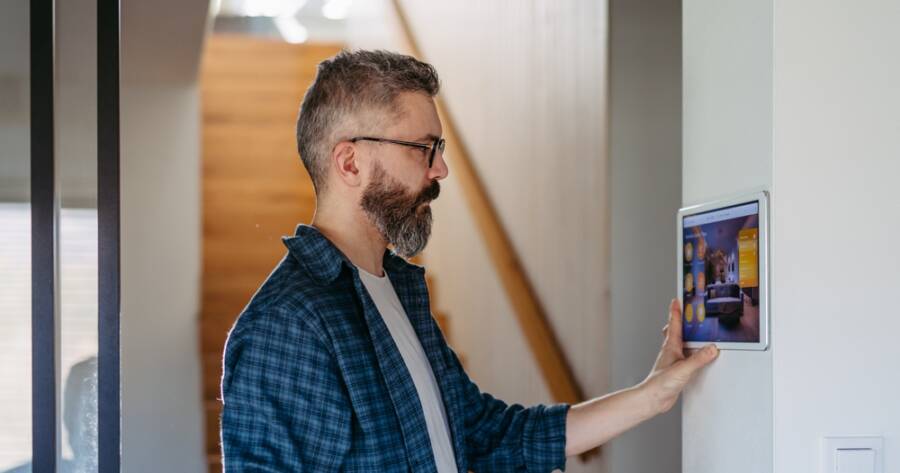Are you looking to make your home smarter without getting overwhelmed? In 2025, smart home devices are more user-friendly than ever. From voice assistants to smart plugs, many gadgets can help you automate everyday tasks, improve security, and boost energy efficiency—all while staying easy enough for beginners to use. The best part? You can start small and build as you go. Understand some of the best beginner-friendly smart devices.
Voice Assistants That Do More Than Talk
A voice assistant is often the first step into the world of smart home technology. Devices like Amazon Echo with Alexa or Google Nest with Google Assistant can help you control your lights, play music, set reminders, and check the weather—all with a simple voice command. In 2025, these systems are more advanced, offering better voice recognition and tighter integration with other smart devices.
New users will appreciate how intuitive setup has become. You don’t need technical skills or a separate hub to get started. Most voice assistants walk you through the setup process right out of the box. Once connected, they act as the heart of your smart home, letting you expand by adding compatible lights, plugs, or cameras later.
Smart Plugs: The Easiest Upgrade
If you’re not ready to invest in larger smart appliances, smart plugs are a great way to dip your toes in. These compact devices plug into any standard outlet and can turn regular electronics—like coffee makers, fans, or lamps—into smart ones. Once connected to an app, you can schedule on/off times or control them remotely.
Smart plugs are especially useful for people who want a taste of automation without rewiring anything. You can program them to turn off after a certain time, helping cut down on electricity use. Most are compatible with major voice assistants, making it even easier to manage your home with simple commands.
Smart Lighting for Comfort and Efficiency
Smart bulbs and light switches bring convenience and mood control into any room. Whether you want to dim the lights, change colors, or schedule them to turn on when you get home, smart lighting helps you customize your environment.
The best part for beginners? You don’t have to replace every light in your house. Many people start with just one smart bulb in a frequently used space—like the living room or bedroom. With brands like Philips Hue and TP-Link Kasa continuing to innovate in 2025, it’s easy to find starter kits that don’t require an electrician or a hub.
With an app or voice control, you can reduce energy waste, improve sleep routines with warmer light at night, or even deter break-ins by automating lights while you’re away.
Smart Security Devices for Peace of Mind
Home safety is another area where smart tech shines. Video doorbells, indoor cameras, and smart locks have become more beginner-friendly and reliable. For instance, video doorbells now offer sharper video quality and better motion detection, helping you see who’s at the door even when you’re not home.
Smart locks let you lock or unlock your doors remotely, a helpful feature if you often forget your keys or need to let someone in while you’re away. Many locks now come with fingerprint readers or keypad access, giving you flexibility in how you secure your space.
You can start with just one or two security devices. They often work independently but can also be integrated into a larger smart home system over time. For beginners, many brands offer step-by-step mobile app setups and 24/7 support.
Thermostats That Learn Your Habits
Smart thermostats like those from Ecobee and Nest are ideal for saving energy while staying comfortable. These devices track your temperature preferences and daily routines, then adjust settings automatically to maximize comfort and efficiency.
In 2025, these thermostats can even respond to outdoor weather patterns and occupancy sensors. That means if no one is home, the thermostat can reduce heating or cooling to save energy. You can also adjust your home’s temperature using your phone or voice assistant.
Installation is often straightforward, especially with systems designed for beginners. Most brands provide clear guides or offer video tutorials. Once set up, the energy savings and convenience add up quickly.
A Smarter Home, One Step at a Time
The best thing about smart home tech in 2025 is that you can start small. You don’t have to invest in an entire system upfront. Begin with one or two devices—a smart plug here, a light bulb there—and expand when you’re ready. Most devices today are designed to work together and grow with your needs.
Look for products that are labeled as compatible with your chosen voice assistant. That way, everything stays connected and easy to manage. Focus on what matters most to you—whether it’s convenience, safety, energy savings, or comfort—and choose products that help meet that goal.
Your First Steps to a Smarter Space
Creating a smart home in 2025 doesn’t require a tech background or a big budget. With beginner-friendly devices like voice assistants, smart plugs, and connected lighting, anyone can build a more comfortable and efficient living space.
The key is to start with products that suit your needs and lifestyle. From there, the possibilities are wide open—one smart upgrade at a time.

